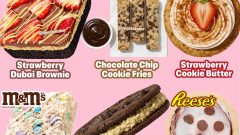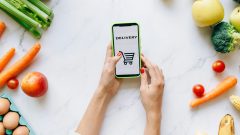Is Subway’s Tuna Lawsuit Too Fishy To Be True?

Fast food sandwich giant Subway was rocked with another potential scandal this week. Years after dealing with allegations about their chicken containing other proteins, a lawsuit has been filed claiming that Subway’s tuna salad isn’t made with tuna.
According to the Washington Post, plaintiffs in the lawsuit got samples of the tuna from multiple locations in California. They declined to say the ingredients found, but claim that the salad mix was “not tuna” and “not fish.”
Subway has vehemently denied the allegations, saying they use “pure tuna” in a statement to the Post. Their ingredients list on the chain’s website also only has two ingredients for the salad mix: Flaked tuna in brine (which has tuna, water, and salt) and mayonnaise (which also contains spices and a preservative called EDTA that protects its flavor).
Obviously, given the history of fast food claims in the past, this controversy has swarmed swarmed the food news cycle. However, there are some questions brought up in the nature of the lawsuit that suggest it may not succeed.
Specifically, the lawsuit does not name what tests it used to determine how Subway’s tuna salad has no tuna. The most obvious forms of testing would be DNA barcoding or identification tests, which were used back when the chain’s chicken was evaluated in Canada.
While we don’t know if the plaintiffs used that kind of testing, we do know that it can raise some potential concerns on accuracy. Canned tuna (which the flakes come from) is known to cause issues when used in a DNA barcoding test. A 2017 review of DNA barcoding techniques in fish from Chapman University found that canned fish products often had a lower success rate and quality when it came to results.
The DNA barcoding sequences used could also be hindered by other ingredients in the salad mix. Given how the tuna is blended into mayonnaise, which is made with eggs, the possibility exists that the test results could be mixed with chicken DNA from the mayo.
The tests were conducted in independent labs, which should help reduce bias in the plaintiffs’ results. Unless they would be able to get the actual pre-mixed tuna from Subway, however, we don’t know for sure if any test results would be accurate. To date, the plaintiffs haven’t offered up additional information on how their testing was conducted.
It’s also unclear if any replications were performed to confirm results for the same samples, which was done back when CBC did their investigation of Subway’s chicken. Without knowing more information about how testing was conducted, given the data the plaintiffs have released, it’s hard to trust the veracity of the claims they’ve made to news outlets.
Of course, the plaintiffs could also be right, and probably wouldn’t be going to court unless they believed they had a strong case. Either way, we’ll have to see how this lawsuit plays out in court.






















